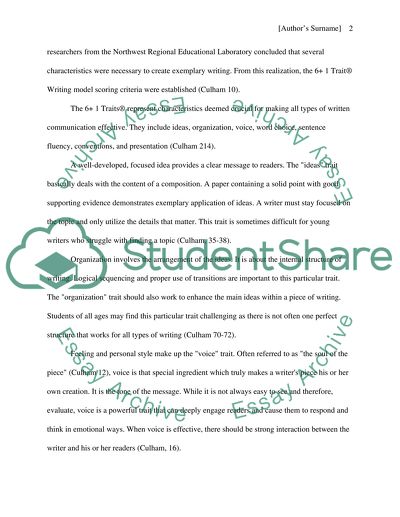Cite this document
(“Writing Assessment: A Six Traits Approach Research Paper”, n.d.)
Retrieved from https://studentshare.org/education/1426912-writing-assessments
Retrieved from https://studentshare.org/education/1426912-writing-assessments
(Writing Assessment: A Six Traits Approach Research Paper)
https://studentshare.org/education/1426912-writing-assessments.
https://studentshare.org/education/1426912-writing-assessments.
“Writing Assessment: A Six Traits Approach Research Paper”, n.d. https://studentshare.org/education/1426912-writing-assessments.


